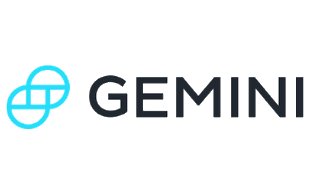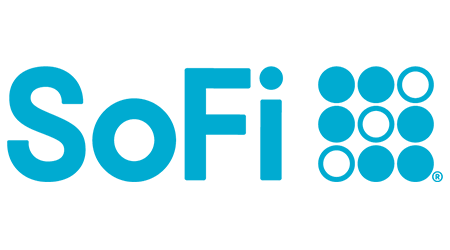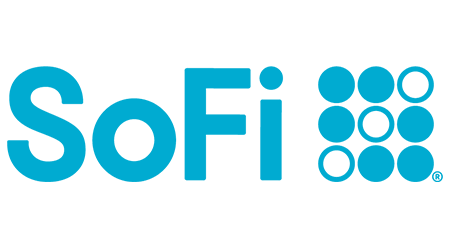-
Commitment to our readers
18 years
Helping you save money
Reviewed
by experts
Cited by
major publications
Finder maintains full editorial independence to ensure for our readers a fair assessment of the products, brands, and services we write about. That independence helps us maintain our reader's trust, which is what keeps you coming back to our site. We uphold a rigorous editorial process that ensures what we write and publish is fair, accurate, and trustworthy — and not influenced by how we make money.
We're committed to empowering our readers to make sound and often unfamiliar financial decisions.
We break down and digest information information about a topic, product, brand or service to help our readers find what they're looking for — whether that's saving money, getting better rewards or simply learning something new — and cover any questions you might not have even thought of yet. We do this by leading with empathy, leaning on plain and conversational language that speaks directly, without speaking down.
In this guide, you’ll explore several options to help you generate regular earnings through investments. From dividend-paying stocks to cryptocurrency staking, each method comes with its own risk level and income potential.
Whether you’re seeking steady interest or more dynamic, high-risk returns, choosing investments that align with your financial goals and risk tolerance is essential.
Wondering how to invest and make money daily? Here’s your guide.
How to invest and make money daily: 6 ways
Explore several investment options to help you achieve daily earnings or frequent returns. Each method varies in risk and income potential, so assessing which options align with your financial goals and risk tolerance is crucial.
1. Cryptocurrency staking
Crypto staking is a way to earn rewards by holding onto certain digital tokens.(1) When you stake, you lock your crypto for a set period, and the blockchain uses your deposit to verify and secure transactions.
In return, you earn rewards, often paid in the same cryptocurrency. Some exchanges, like Coinbase, offer daily payouts for staking in certain tokens.(2) For example, Polkadot (DOT) offers a daily payout rate, while other tokens, like Cardano (ADA) and Solana (SOL), offer payouts every five days.
Staking can provide income in the form of crypto rewards, but its reward payouts can fluctuate due to the number of participants staking and other market conditions.(3) Additionally, staking comes with potential security vulnerabilities and penalties for malicious activity.(4)
Risk: High. Cryptocurrency prices are volatile, and staking involves additional technical risks. Always research the staking requirements and rules for each project.
Invest towards a better future with secure crypto trading on Gemini
Gemini is one of the few exchanges available nationwide, offering a user-friendly platform with industry-leading security. With advanced trading tools and an intuitive UI, Gemini is accommodating to newcomers and experienced traders alike.
- Robust and easy-to-navigate mobile app and web interface.
- Earn crypto with the Gemini Credit Card®. Issued by WebBank.
- Get a Finder exclusive offer, $25 in bitcoin when you trade $100 with the code Finder25.
Disclaimer: This page is not financial advice or an endorsement of digital assets, providers or services. Digital assets are volatile and risky, and past performance is no guarantee of future results. Potential regulations or policies can affect their availability and services provided. Talk with a financial professional before making a decision. Finder or the author may own cryptocurrency discussed on this page.
2. Selling covered calls
Selling covered calls is an options trading strategy where you own shares of a stock and sell a call option that gives the buyer the right to purchase your shares at a specific price — the strike price — by a set date.(5)
In exchange for selling the option, you receive a premium, which can generate income.
The downside is that if the stock price rises significantly above the strike price, the buyer can exercise their right to buy your shares at the agreed price, even if the current market value is higher. Additionally, if the stock price falls, the value of your shares could decrease, which might offset the premium you received.
If you sell a call that expires the same day, you collect the premium that day. And if the option expires worthless, you keep the premium and your shares — allowing you to repeat the process.
Risk: Moderate to high. The strategy depends on stock price stability and your ability to manage options contracts.
Flexible & No Commission options trading with SoFi Invest®
- Trade stocks, options, ETFs, mutual funds, alternative asset funds.
- $0 commission on stocks, ETFs and options, with no options contract fees.
- Easy-to-use platform.
- Access educational resources with an in-app trading guide
3. High-yield savings/cash accounts
Some high-yield savings accounts (HYSAs) accrue interest daily, even though payouts typically happen monthly. Savings accounts that compound interest daily allow interest to build each day and increase your total return over time. This compounding effect can significantly boost your savings, especially if you continue making regular deposits.
Although the returns are lower than riskier investments, HYSAs offer a safe way to grow your money because they’re insured by the Federal Insurance Deposit Corporation (FDIC), meaning your deposits are protected up to $250,000, even if your bank fails.
Risk: Low. High-yield savings accounts are typically FDIC-insured, and unlike stocks or some fixed-income securities, the value of your deposits won’t fluctuate based on market conditions. This lack of fluctuation makes HYSAs a stable, low-risk option for gradually growing your funds with peace of mind.
SoFi Checking and Savings
With SoFi Checking and Savings get paid up to two days early. Set up direct deposit to automatically get your paycheck up to two days early every time you get paid
- Up to 3.80% APY on savings by meeting deposit requirements
- Get up to a $300 bonus with direct deposits of $5,000 or more
- $0 account or overdraft fees
4. Dividend stocks and ETFs
Stocks and exchange-traded funds (ETFs) that pay dividends distribute a portion of a company’s profits to investors. These are typically large, stable businesses.
For instance, dividend stocks like Apple (AAPL) and Johnson & Johnson (JNJ) and dividend ETFs like the SPDR Portfolio S&P 500 High Dividend ETF (SPYD) have a positive track record of consistent quarterly payouts.
While dividends are usually paid quarterly, some companies offer monthly payments, providing a steady revenue stream for investors. Additionally, these investments can appreciate through stock price growth, contributing to consistent income.
The stock prices of these investments can fluctuate daily, which impacts your overall income. If stock prices drop, your dividend yield — the percentage of income you receive from dividends relative to the stock’s price — can appear higher, but the overall value of your investment may decrease. Conversely, if stock prices rise, your yield may decrease, but your investment becomes more valuable, contributing to potential daily income through price appreciation.
Risk: Moderate. The value of dividend stocks and ETFs can fluctuate daily based on the market’s performance, which can increase or decrease your dividend yield.
Get free access to Robinhood's new desktop platform
All you have to do is sign up for a Robinhood account! Existing Robinhood users will automatically gain access to the platform, called Robinhood Legend. Standout features include the ability to:
- Add up to eight charts in a single window.
- Place orders from a watchlist, position or options chain with one click.
- Trade directly from a chart.
- Leverage dozens of technical indicators, drawing tools, custom intervals and chart types.
- Customize your layout or choose from layout templates.
5. Fixed-income investments
Fixed-income investments pay investors a set amount of interest or dividends at regular periodic intervals, often for a specified period. Examples include bonds, certificates of deposit (CDs), money market accounts and Treasury Bills.
While fixed-income investments are less risky, market changes can still impact them. Rising interest rates can reduce the value of older bonds, and inflation can shrink the purchasing power of your returns.
Despite these risks, their stability makes them a popular choice for conservative investors.
Risk: Low to moderate. Fixed-income investments can be affected by market conditions, inflation or interest rates.
Public Treasury Account
Get 3.8%* yield on your cash. Purchase Treasury Bills in seconds and access your money at any time.
- $0 commission for U.S. listed stocks and ETF trades placed during regular US market hours, and competitive trade fees for alternative assets.
- No payment for order flow (PFOF) on equities, ensuring optimal price execution for your trades.
- A community-driven experience with real-time insights and advanced data at your fingertips.
6. Real estate investment trusts (REITs)
A real estate investment trust (REIT) is a company that owns, operates or finances income-generating real estate, like apartment buildings, shopping centers or office spaces.(6)
When you invest in a REIT, you’re buying shares in that company, which gives you a slice of the income generated by the properties they manage. One of the big benefits of REITs is that they must pay out at least 90% of their taxable income to shareholders, meaning you can receive consistent dividends monthly, quarterly or yearly, depending on the REIT.(7)
While dividends are typically paid quarterly, the value of the real estate and REIT share prices can fluctuate daily, offering the potential for daily gains in asset appreciation. However, changes in real estate markets or interest rates could impact the income REITs generate.
Risk: Moderate. Real estate investments are subject to market fluctuations and economic conditions.
5 steps to start investing
Now that you have a rough idea of the best ways to invest your money for consistent income, here’s how to start.
- Identify your goals, time frame and risk tolerance. Decide how much risk you are willing to take, how long you plan to keep your investments and what you want to achieve financially. These factors will help guide your choice of assets, from conservative bonds to riskier stocks or cryptocurrencies.
- Decide if you need help. Beginners or those with limited time may benefit from using robo-advisors or consulting financial experts. More experienced investors may prefer to manage their own portfolios, but this requires a commitment to research and ongoing management.
- Choose your account type. Depending on your goals — such as saving for retirement or general investing — choose from individual retirement accounts (IRAs) or taxable brokerage accounts. Each type offers different advantages and investment options.
- Open your investment account. Open an account with an online broker for more control over your investments or use a robo-advisor for automated management based on your risk tolerance.
- Invest. After opening and funding your account, start investing by selecting assets that match your strategy and risk profile. Regular contributions and periodic reviews will help align your investments with your goals.
Invest Smarter with VectorVest
VectorVest delivers data-driven insights together with automated stock analysis and portfolio management tools to help you make informed investment decisions with confidence
- Special 30-day risk-free trial for $9.95.
- Accurate assessments of the value of 16,000+ stocks.
- Get daily buy, hold or sell ratings based on real-time market trends.
- Get expert insights, webinars and analysis to help you improve your investing skills.
Bottom line
Investing for daily income requires a strategic approach and a clear understanding of the various opportunities available. Some investments, like dividend stocks or REITs, provide frequent payouts, while others offer the potential for daily earnings through price appreciation or interest accrual.
Diversifying your investments across different asset classes and payout schedules can enhance your ability to generate daily income. You can balance higher-risk options, such as cryptocurrency staking or selling covered calls, with more stable choices like fixed-income investments or high-yield savings accounts to generate consistent income.
Depending on your brokerage account, combining these different investments can diversify your portfolio and potentially create multiple income streams.
Frequently asked questions
How much do I need to invest to make $1,000 per month?
The amount you need to invest to make $1,000 per month depends on the type of investment and the rate of return. For example, a portfolio worth $300,000 earning 4% in dividends could result in a monthly income of $1,000.
How long does it take to double your money?
To estimate how long it will take to double your money, many investors use the Rule of 72. Simply divide 72 by your annual rate of return to get the approximate number of years needed to double your investment.(8)
For example, if your investment earns 10% interest per year, it will take 7.2 years to double in value — calculated by dividing 72 by 10.
Ask a question
More guides on Finder
-
How to Invest in Copper
Learn how to invest in copper by buying physical copper, investing in copper stocks and ETFs or buying copper futures.
-
Event Contracts: What They Are and Where to Trade Them
Event contracts let you trade on the results of future events, with simple Yes or No outcomes. Trade on Robinhood, Webull and others.
-
Lear Capital Review
Lear Capital’s gold & silver IRAs review: Compare fees, pros, cons and customer ratings before you invest.
-
Moomoo Promotions and Bonus Offers for June 2025
Snag cash sweep bonuses, free stocks, transfer matches and more from Moomoo. See the details and how to cash in here.
-
Interactive Brokers Promotions and Bonus Offers for June 2025
Interactive Brokers is currently running a referral promotion. See the details and how to take advantage of this deal here.
-
Tastytrade Bonus Offers and Promotions for June 2025
Tastytrade bonuses include a competitive referral bonus and others. See what you have to do to snag them here.
-
Robinhood Bonus Offers and Promotions for June 2025
Robinhood bonus offers cater to both new and existing customers. Maximize your investment with its competitive IRA match today.
-
SoFi Invest® Bonus Offers and Promos for June 2025
Earn free stock with SoFi® active investing bonuses. See how to get the best SoFi bonus deals here.
-
Robinhood Legend Review: Same Sleek UI, Now On Desktop
Starting October 16, Robinhood Legend will become available to all Robinhood users for free. See what’s included in this new desktop platform.
-
Is Robinhood Gold Worth It? Yes, If You Regularly Use These Key Features
Robinhood Gold costs $5/month. The cost is worth it if you take advantage of the IRA match, margin interest savings and bonus on taxable deposits.







